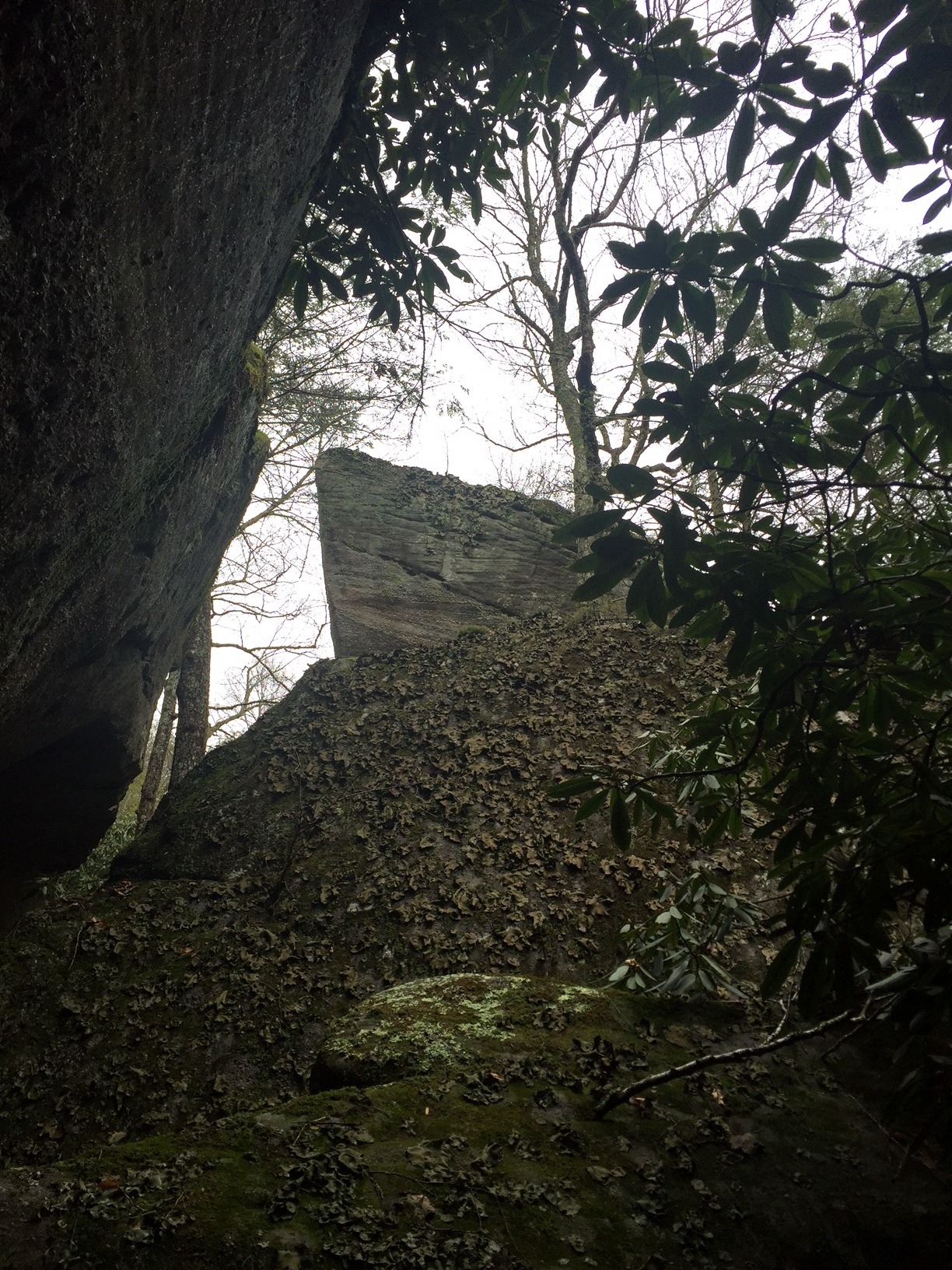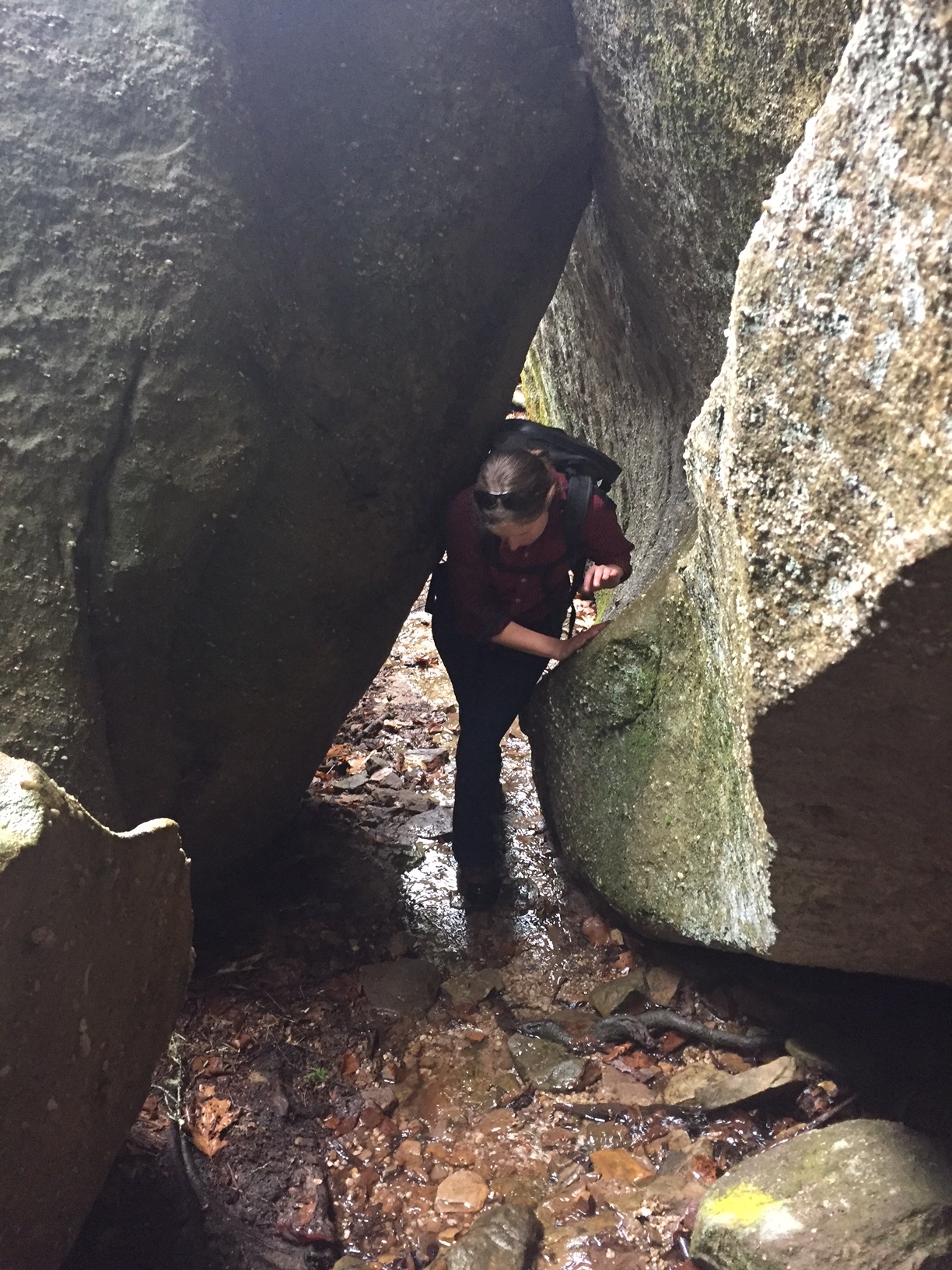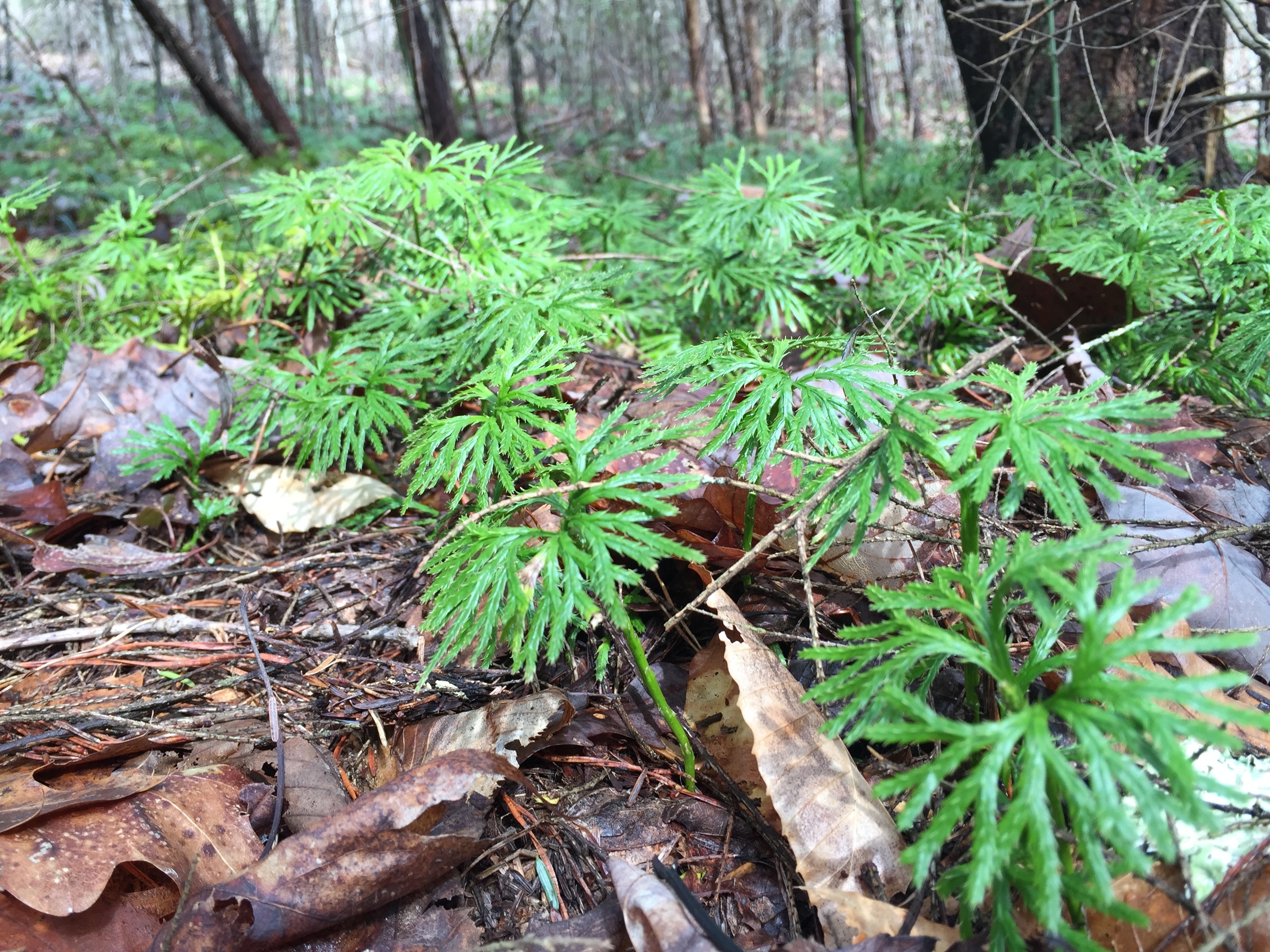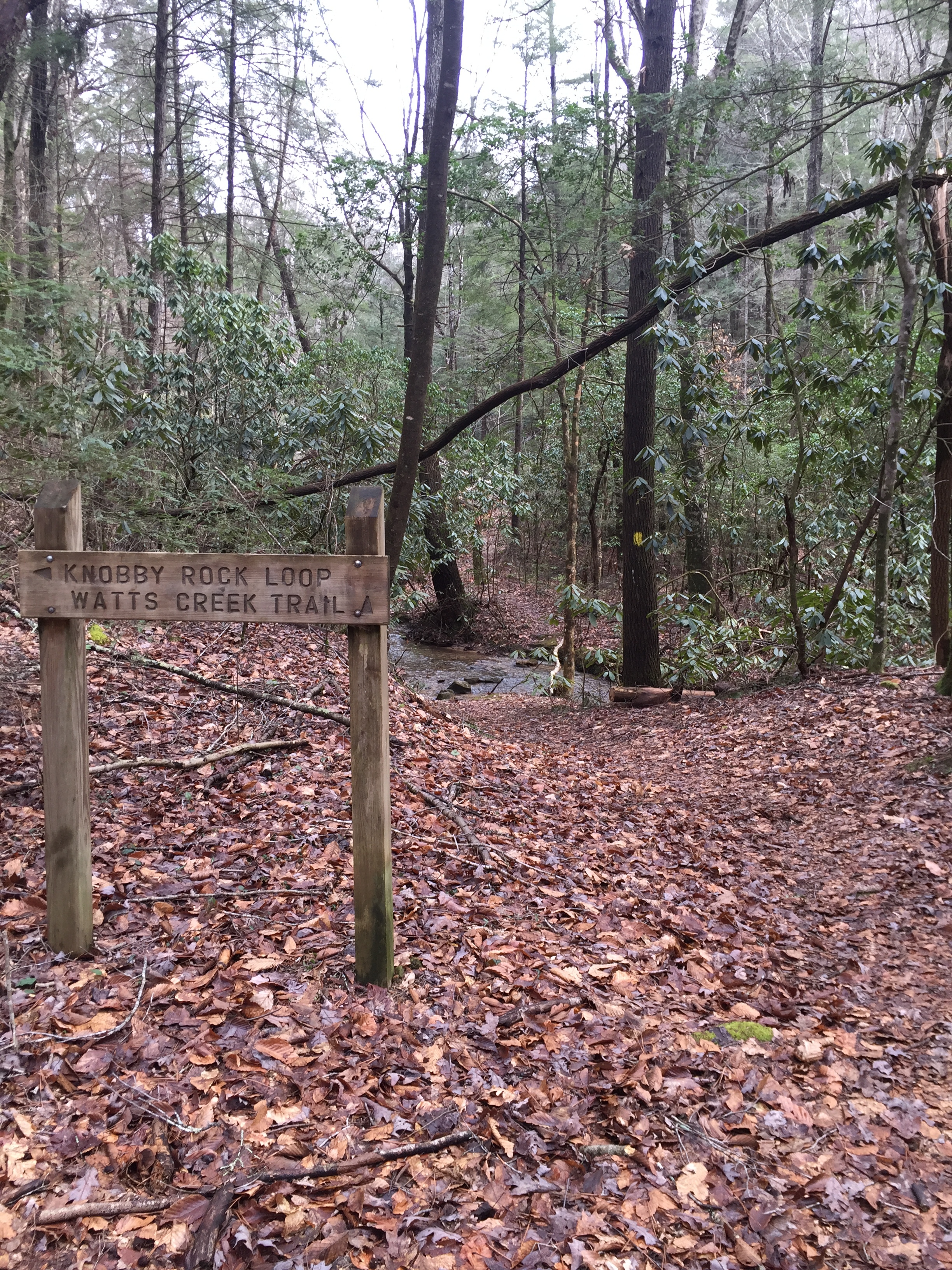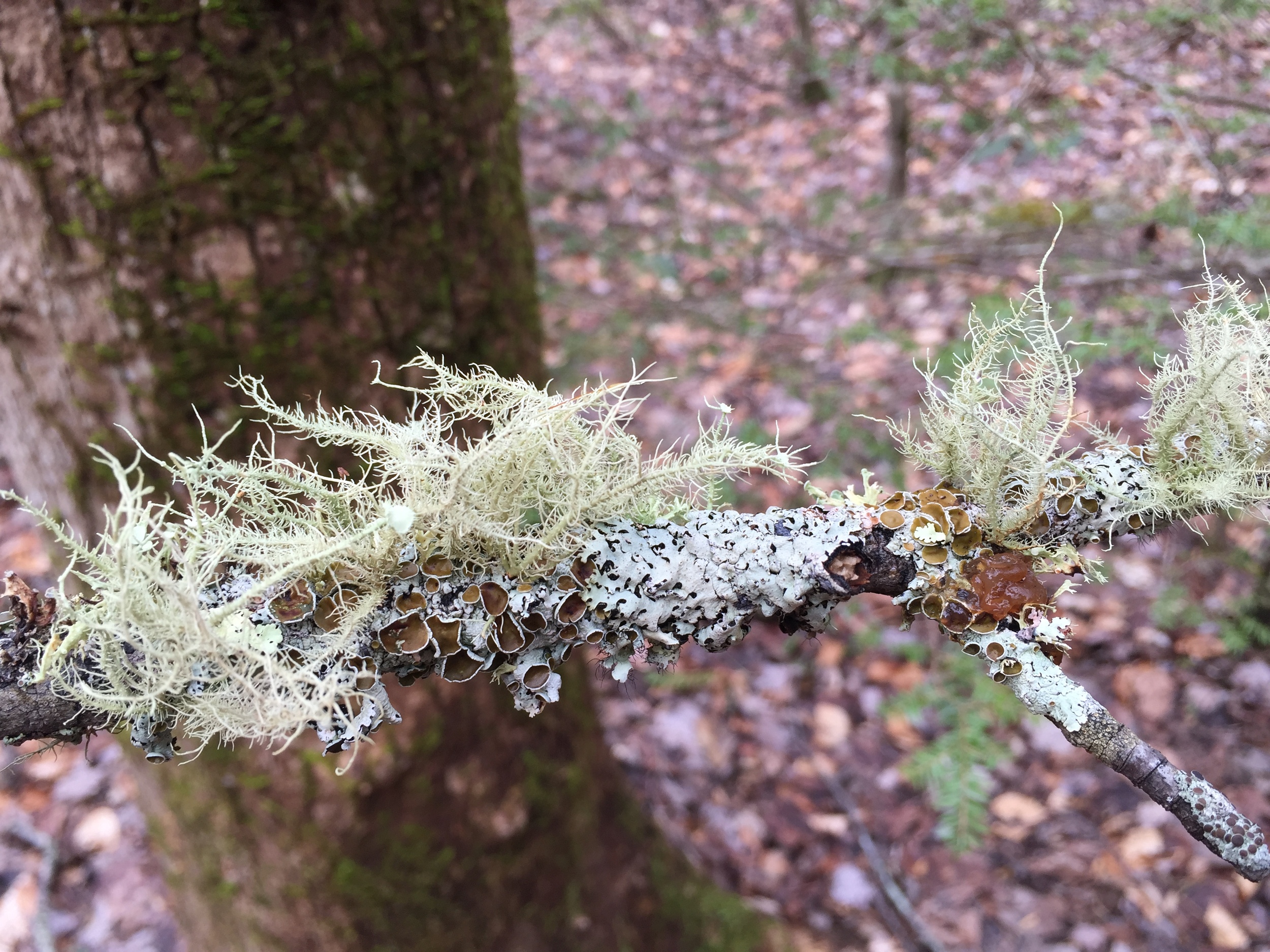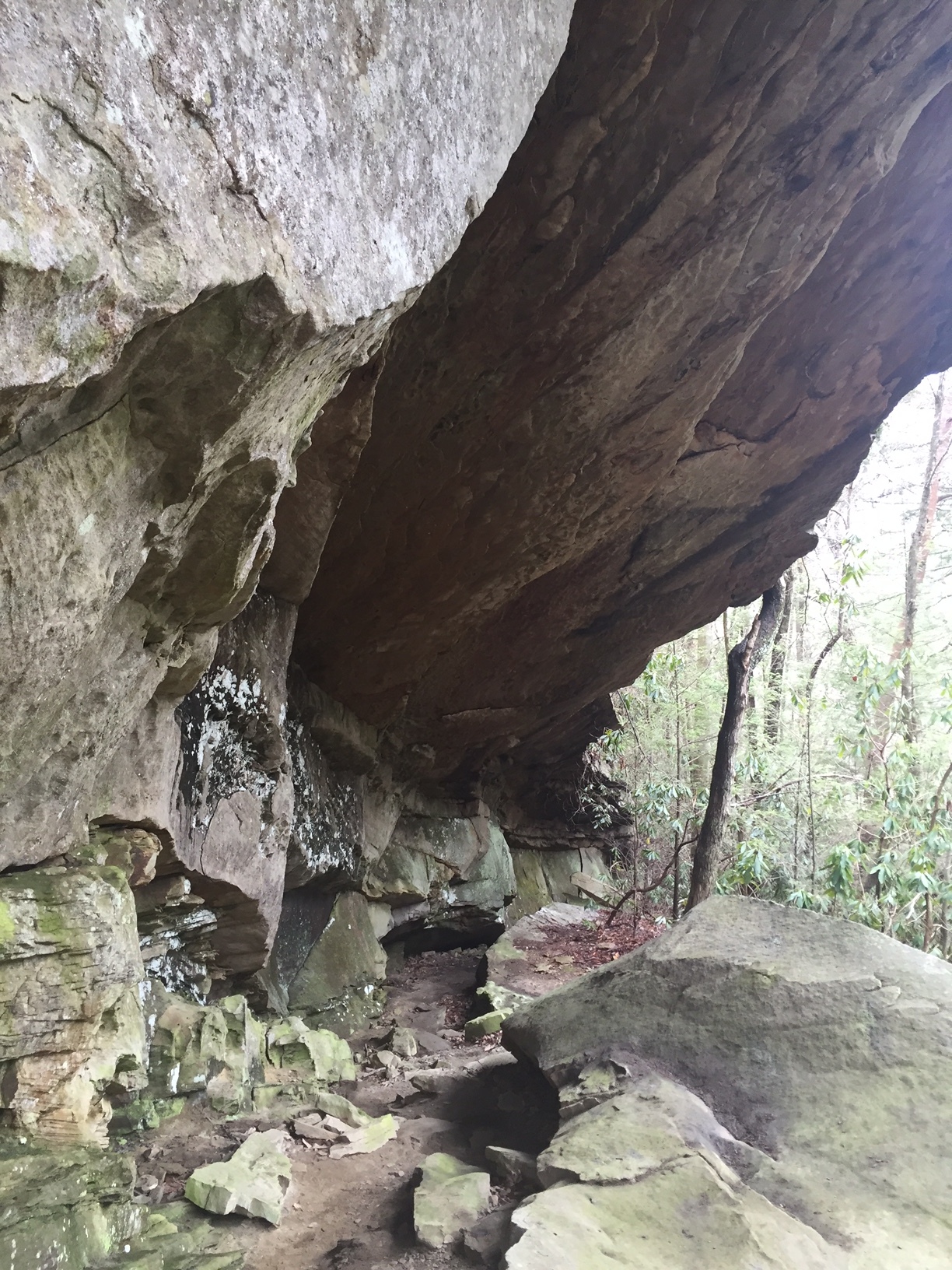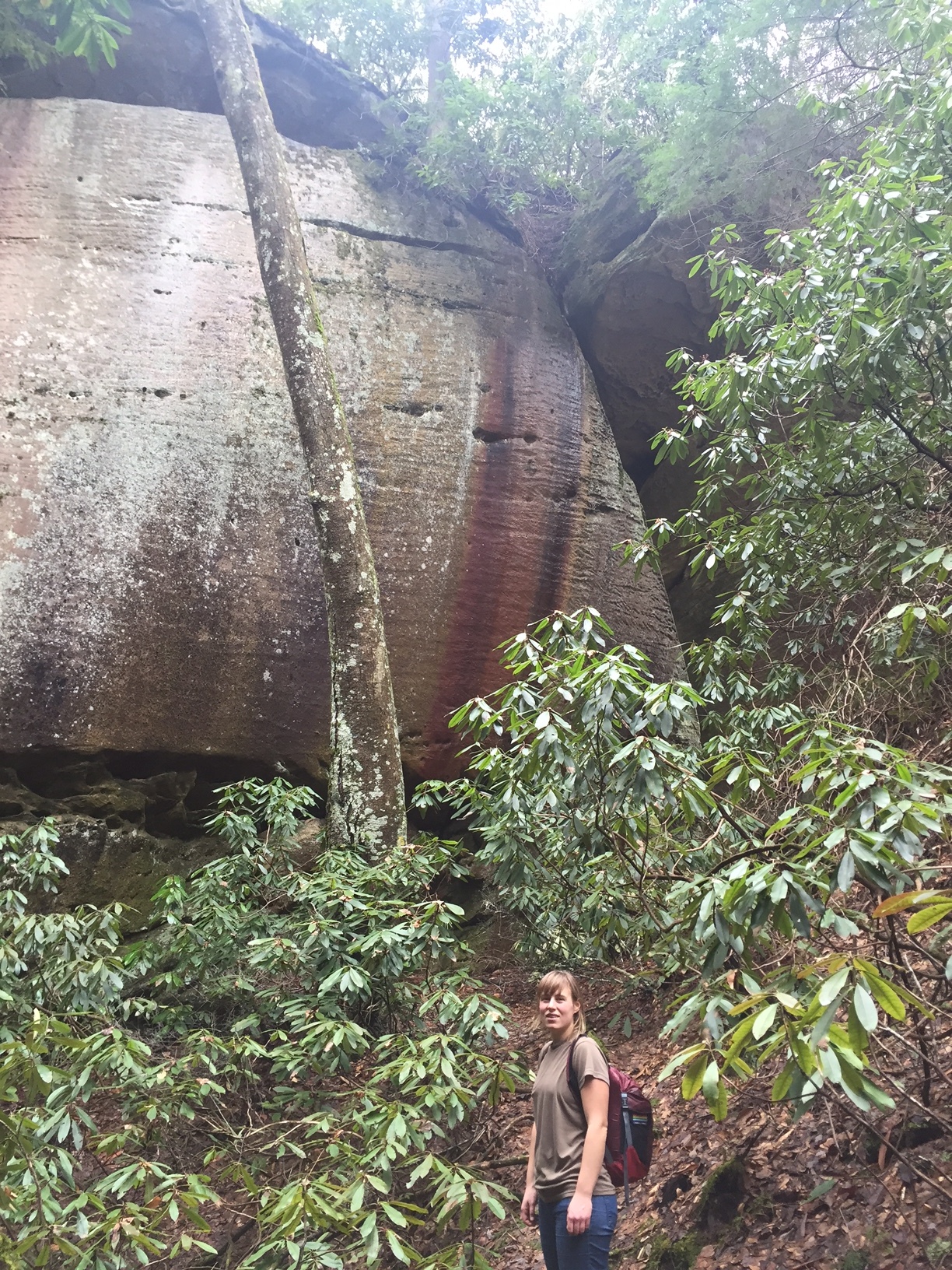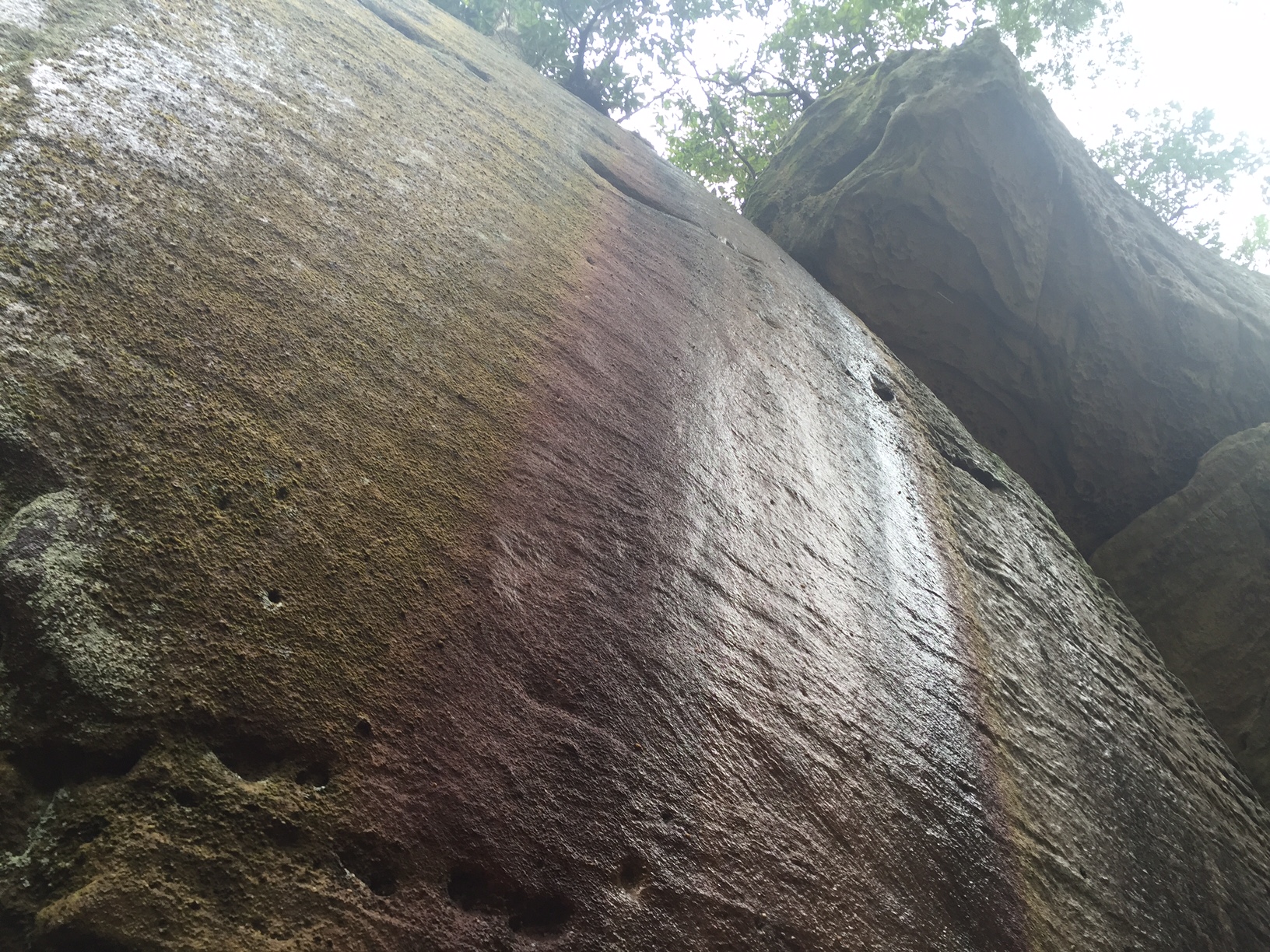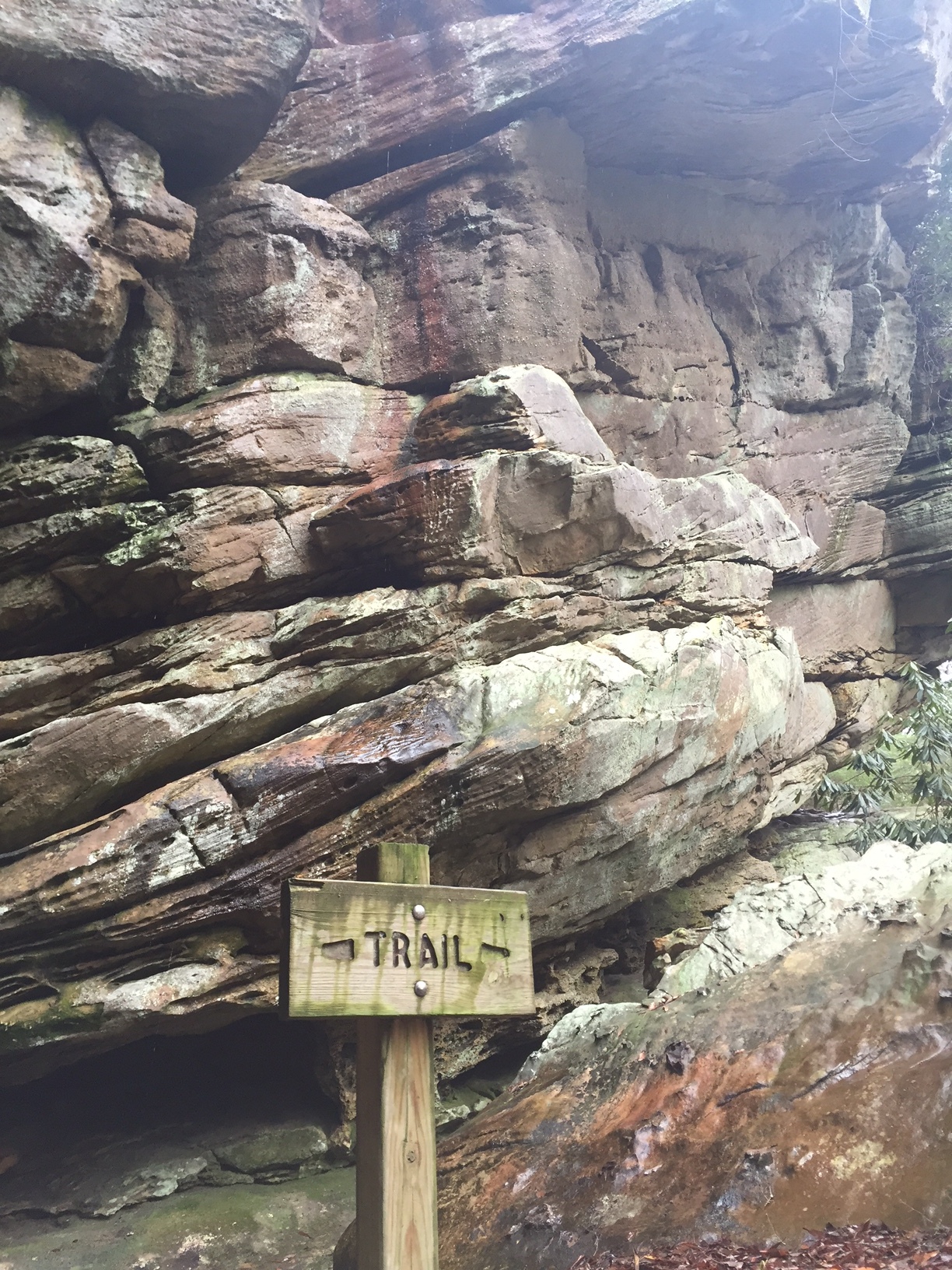Kentucky's Ancient Forest: An adventure in Blanton Forest State Nature Preserve
Far off the highway in Eastern Kentucky’s Appalachian mountains, Blanton Forest State Nature Preserve is home to the largest known old-growth forest in the state. Old growth forests are rare in the eastern United States. Their trees die from rot, disease, and windfall, rather than from crosscut or chainsaw. As such, they look more like the woods Daniel Boone might have seen when he broke trail across the Cumberland Gap into what is now Kentucky. Let alone and living by its own will, Blanton Forest is one of the wildest places in the state.
Photo by Caroline Stephens
This February, I took a day trip from my hometown in Louisville to Harlan County to hike the trails at Blanton Forest, part of Pine Mountain. Riding shotgun with me was my hiking companion, Katie Nelson, a former wilderness ranger, and as a westerner, not one to be afraid of winter cold. We got off I-75 at Corbin, the origin place of Kentucky Fried Chicken, and what always seems to be the trailhead for so many adventures into the hills of Eastern Kentucky. Off the highway, the roads narrowed and narrowed still, swinging like the old rivers that made these hollows. We found the parking lot for the nature preserve with no trouble, per the directions we found online.
On a Monday in winter, ours was the only car in the parking lot next to Camp Blanton, adjacent to Blanton Forest. Up from the parking lot at the camp lodge, a group of men wearing orange pants bickered and teased one another. They walked down slope towards us picking up sticks. They were inmates from a local jail, so we heard, out for a day of community service.
“You think there’s bears in these woods?” one man asked, looking at a patch of mud. “All I see is deer tracks.”
Photo by Caroline Stephens
Katie and I fussed with our bootlaces. I stuffed my backpack with the day hike regulars: Sweetgrass granola, water bottle, binoculars, rain jacket, an extra layer, and a headlamp, just in case we got back past dark. We studied our map, downloaded from the Internet onto an iPhone, setting our minds to the contours of the trail. Unafraid but cautious, we ran like ducks from a hoot owl to the gravel road that would take us to the trailhead.
Blanton Forest State Nature Preserve maintains 4.5 miles of trails. We wanted to walk them all. We started on the mellow, spur trail along Watts Creek, which braids through a narrow hollow. A quarter-mile in, a small stream crossed the trail before it flowed into the creek. The Blackside dace, a federally endangered fish, makes its home in these kinds of small streams. Made of fine quartz sand, the streambed was like a gold snake on the forest floor. Streambeds are like a key to the kind of bedrock you’re standing on. This one, as far as we could tell, was sandstone.
Photo by Caroline Stephens
The trees were rid of their leaves, and through the bare limbs of trees I could see the shape of the land, the hills and hollows. Anything green and living stood out against the winter brown. Rhododendron leaves and hemlock needles, mosses and lichen looked like emeralds next to the leaf litter. A few feet from the trail, a puddle of ancient clubmosses grew. Clubmosses were one of the earliest plant species to evolve roughly 410 million years ago. We found two types of clubmosses along the Watts Creek trail: one that looked like evergreen doilies, called Ground Cedar, and another that stuck out of the ground like pipe cleaners, called Shining Clubmoss.
Photo by Caroline Stephens
The hills closed in on either side of the trail as we moved up creek until we stood at the back of the hollow. Deep in the mountain fold, the water falling on mossy rocks echoed against the hillsides and the trunks of towering hemlock. Tucked against a thicket of giant rhododendron, a wooden sign read “Trail’s End,” though it looked more like the beginning of something than any ending.
Photo by Caroline Stephens
We backtracked on the Watts Creek trail and turned onto the more strenuous Knobby Rock and Sand Cave Loop Trails. We started up a ridge, shedding our winter layers as we warmed up with the climb. Having only read about this place, we weren’t sure we’d know Knobby Rock when we saw it. But then, up ahead through the forest canopy, there it was, a great behemoth of a boulder. It grew larger and larger as we approached, until it stretched into the sky before us, gray and knobby like pile of elephant knees. The incline up the rock was mellow enough to climb, and the traction was good with all those knobs. From the top we got the best view that Blanton Forest offered: of blue green Appalachian Mountains, folding into the horizon. One mountain, flat-topped and bare, was the first mountaintop removal site I had ever seen.
Knobby Rock, KNLT Photo via Preston Lacy
From Knobby Rock, the trail followed a ridge-line until it dropped down near The Maze and Sand Cave, other features along the loop trail. Like Knobby Rock, the Maze and Sand Cave were just as their names would indicate. At the Sand Cave, the trail led us underneath sandstone ledges where water droplets pinked against the rock. Great streaks of red and orange and black painted the sandstone. The leaching of iron, we reckoned.
Photo by Caroline Stephens
At The Maze, the trail wove through a labyrinth of boulders cleaved from the cliffs above, evidence of the violent formation of Pine Mountain. Pine Mountain is the longest kind of mountain: a continuous 125-mile ridge-line that extends from Tennessee to the south and Virginia to the north. This part of the trail was more difficult—navigating through the rock, walking up and down steep, slick slabs. We found our way with little trouble, though, following the yellow blazes that marked the trail. Tucked between boulders, the air was cooler and wetter, the sandstone holding onto the winter cold. Rock tripe lichen, wet and looking like its pig gut namesake, grew on a wet outcrop.
Photo by Caroline Stephens
We had come to Blanton Forest to see big trees, what we so often think of when we think of old growth forests. But we found ourselves staring at the clubmosses, the lichen, and the sandstone as we ducked under ledges and climbed over boulders. Cemented in the rock were small pebbles of white quartz, smoothed by water from some ancient sea.
“How did those pebbles get inside the rock?” I asked Katie.
She replied. “Just deep, deep time.”
Photo by Caroline Stephens

